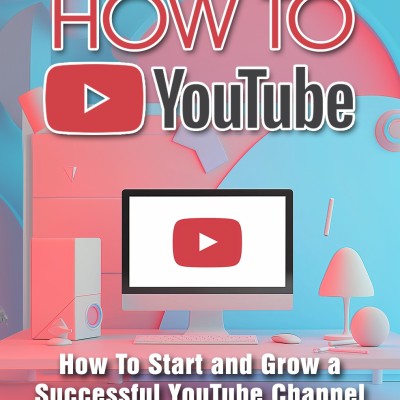
www.upworthy.com
Gardener tests whether you can regrow scraps from store-bought veggies to make a full garden
The way plants provide food for humans and animals alike is one of the coolest things about our planet. And the way humans are honing the art of agriculture, learning to farm and garden most effectively (and hopefully sustainably) to feed the masses is one of the coolest things about humans. Home gardening has long been a supplementary source of food for families around the world, and there's no shortage of books, websites, classes, video tutorials, and more to teach people how to do it. As many beginners find when they get started, gardening is a bit more complicated than simply putting some seeds in the ground and waiting for them to grow. You have soil composition, sunlight exposure, watering schedules, hardiness zones, pests, and other considerations that differ for each plant. But in some ways, growing food can be less complicated than we might think, as we see demonstrated in viral videos like this one:
@creative_explained
Every day we throw out food scraps, when so much of it can be used in other ways, even regrowing food! ?? . #upcycle #savemoney #regrow #kitchenscraps #garden #gardening #plants #plantsofinstagram #gardenlife #lifehack #hacks #diy #recycle #sustainableliving #howto #plantstagram #creativeexplained #magic #organicgardening #instadaily #tiktokstar #plantfood
Regrowing vegetables from portions of store-bought veggies seems like something that might work or might not, or that might only work a little bit for a little while. Even if you can get some romaine lettuce to sprout from a stub in your kitchen, does that mean you could plant it in a garden and have it grow into a full-fledged plant? Is it really that simple? James Prigioni explored the question, "What happens when you regrow veggies from the store?" on his gardening channel in a video that's been watched nearly 5 million times. For 135 days, Prigioni grew onions, carrots, beets, ginger, tomatoes and more to see how the store-bought stubs would fare in a real garden. Here are the results:
- YouTube
www.youtube.com
He started by soaking the veggie scraps in water in a glass cake pan, then planted them in a raised bed with soil. He covered the bed with a shade cloth for two weeks to avoid them budding plants from getting too much direct sunlight. After just two weeks, there was already new green growth coming from everything he planted except the lettuce and cabbage. In hindsight, he said, he could have spouted the lettuce and cabbage in water first, but he really wanted to see what would happen if he just planted then as is. The one whole onion he planted turned into five onions. The beet top that survived grew into funky-shaped but much larger beet that tasted god. The carrot tops grew some long, thin carrots expanding out from the center. The potato he dropped in the ground whole turned into a harvest of over a dozen potatoes. The tomato top, which included some seeds, turned into a large tomato plant, and so did the ginger. The garlic grew greens, but because of the season, it didn't grow into bulbs.
Vegetables GIF
Giphy
With a couple of exceptions, the experiment was a rousing success. Apparently, you can grow a lot more vegetables from vegetables than people may realize. The one thing he recommends is to buy organic veggies if you're going to try planting scraps, as non-organic produce sometimes has sprout inhibitors on it that might interfere with your experiment.People in the comments are sharing their own experiences with growing veggies from veggies:"Last year, I bought a 1.5 lbs bag of purple baby potatoes in my local ShopRite. I couldn’t find purple potato seeds, so I decided to take a chance. There were 22 baby potatoes and all of them had eyes with some growth protruding, so I knew they would take off. Sure enough, I got an excellent crop out of those 22 baby potatoes. We enjoyed them until the end of year and then somehow forgot about them. When in March I realized we had still about ten pounds of potatoes, they had already started to sprout. In April, I planted some and the rest donated to the community garden. Both – us and the community gardeners – enjoyed huge crop of delicious purple potatoes. In the past, I occasionally planted store-bought potatoes when they were sprouting, but this was the first time I deliberately purchased a bag of potatoes just for planting. I am glad I did."
It's surprisingly simple to grow potatoes from potato parts.Photo credit: Canva"As a child of a potato farmer, if you cut that potato in 3rds so that each had a sprout, you end up with 3 plants.""My Mom was a farmer's daughter from the Depression Era and taught me to grow potatoes from the eyes or sprouts. You simply cut them, making sure each cut has an eye, and plant them into the soil. I did this and ended up with more than I needed. My mom and I canned potatoes for days. One of my best memories.""I love how easy tomatoes are to grow. We planted some tomatoes and when they grew our dog started going over, picking one off, walking a few steps and eating it. After she passed, tomato plants started growing all over the yard. It was like a little gift from her.""I'm 69, when I was a little kid, my elderly neighbors, threw all their scraps, from veggies in a certain spot of the garden, they would get food from there, it amazed me, I thought that was so cool!""Have been doing the same kind of replanting...onions, carrots, tomatoes, beets, and now cilantro, pak chop, etc. When I clear out the fridge...anything that looks like it will regrow goes in the raised bed. It is fun."You can follow The Gardening Channel with James Prigioni on YouTube.














